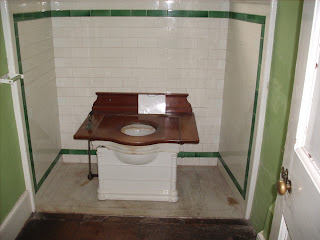
 If you've made the decision to visit England, Wales and Scotland (I'm not experienced with Ireland but it's an easy shuttle or a ferry across), does it make sense to you to travel with a large group, a set itinerary made up by someone else, and no option for changing your mind and rearranging your travel plans?
If you've made the decision to visit England, Wales and Scotland (I'm not experienced with Ireland but it's an easy shuttle or a ferry across), does it make sense to you to travel with a large group, a set itinerary made up by someone else, and no option for changing your mind and rearranging your travel plans?If not, you might want to consider traveling with someone who can make your arrangements, tend to your needs, and who will enthusiastically support your quest for knowledge of this fine country.
Some of your most desirable destinations cannot be reached by coach. Chance visits, narrow by-ways, remote villages or picturesque wayside inns, castles, houses and a wide variety of landscapes may be lost to you.
Group tours fit a need but if you have the urge to go at your own pace, stay another night, move faster to get in one more big house, or settle a little early for a cozy afternoon in, a personal companion may suit you better.
Many people I've spoken with have mentioned they traveled on tours but to them it was all a blur. They don't really remember a lot of it, having moved from place to place, with a tour guide talking all the while and sometimes it seemed like a muddle of fellow passengers moving en masse to get to the toilet, the tearoom, back to the coach and whisked away to the next destination.
 Though any travel should be interesting and is enhanced by guided tours, time to relax, read the plaques, brochures, panels, and browse through books in a shop should be available--we learn best when we follow our own hearts and passions. You might go crazy over the textiles and tea sets of a big house, while your friend may harbor the desire to study the architecture and stare trance-like at a stone that was signed by a mason 500 years ago. Give yourself the luxury your deserve.
Though any travel should be interesting and is enhanced by guided tours, time to relax, read the plaques, brochures, panels, and browse through books in a shop should be available--we learn best when we follow our own hearts and passions. You might go crazy over the textiles and tea sets of a big house, while your friend may harbor the desire to study the architecture and stare trance-like at a stone that was signed by a mason 500 years ago. Give yourself the luxury your deserve.
My fee would be all expenses paid, plus
an agreed-upon low supplement, depending
on the situation. I can drive, we can share,
I can stay separately in a more reasonable
B&B, should you want to go all out. I can
guarantee the expense for you will be
much more palatable than a tour expense.
And more fun!
And more fun!
Let's talk.
Mail to: gvdailynews@gardenvalleyidaho.net
Phone: (208-462-2511)
Photos: Top, a lone afternoon tea with me, next to Scotland's Loch Lomond. 2nd, Ightham Mote in Kent, south of London. 3rd, Toilette items in State Bedroom, Chatsworth. 4th, signed Mason's block at Castle Raglan, South Wales.


















